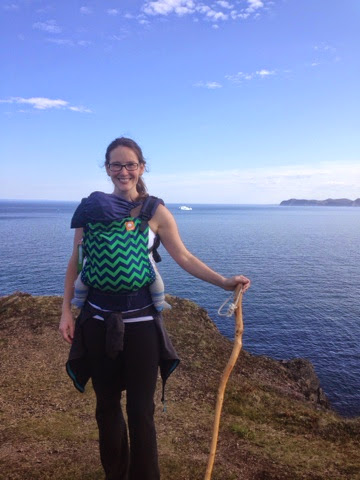...spreading the love of babywearing with families across Newfoundland and Labrador!
Friday 20 June 2014
About us.
Where to begin?
Wednesday 18 June 2014
Monday 16 June 2014
How to Break in a New Wrap
All wraps, like your favourite pair of jeans, need a breaking in period to stretch and soften the fabric. This will ultimately lead to a wrap that is soft and easy to work with. Buying a wrap second hand is a great way to skip the break in period. But, if you've taken the plunge and bought a brand new wrap there are lots of fun ways to break it in. Here is a list of 14 ways to break in your new purchase.
1. Wash it
3. Iron it
Turn up the heat and iron both sides.4. Braid it
5. Sit on it
Sitting on your wrap will help soften the fabric. Bring it in the car and sit on it while driving.
6. Sleep with it
7. Use it as a blanket
8. Swing on it
For a really fun wrap swing follow this tutorial http://www.joyfulabode.com/2013/05/25/woven-wrap-swing-winning-mom-of-the-year/
Other ways to make a wrap swing include:
- have two adults hold each end of the wrap and a young child lie in the middle
- tie the wrap to a narrow place such as a ceiling rafter or chin up bar (see number 10 below)
9. Use it as a hammock
Make a woven wrap hammock using your dinning room table by following this tutorial: http://www.joyfulabode.com/2012/07/29/how-to-make-a-woven-wrap-hammock/ This hammock is great for toddlers.
For smaller babies tie a double knot to the short sides of crib rails and place the baby on the middle of the wrap. See http://paxbaby.com/tag/wrap-hammock/ for an example.
10. Weight it
11. Run it through banister slats
12. Play tug of war
13. Wrap with it!
14. Send it Travelling!
Tuesday 3 June 2014
While on the topic of babywearing safety...
1. Make sure your baby can breathe. Baby carriers allow parents to be hands-free to do other things … but you must always remain active in caring for your child. No baby carrier can ensure that your baby always has an open airway; that’s your job.
a. Never allow a baby to be carried, held, or placed in such a way that his chin is curled against his chest. This rule applies to babies being held in arms, in baby carriers, in infant car seats, or in any other kind of seat or situation. This position can restrict the baby’s ability to breathe. Newborns lack the muscle control to open their airways. They need good back support in carriers so that they don’t slump into the chin-to-chest position.
b. Never allow a baby’s head and face to be covered with fabric. Covering a baby’s head and face can cause her to “rebreathe” the same air, which is a dangerous situation. Also, covering her head and face keeps you from being able to check on her. Always make sure your baby has plenty of airflow. Check on her frequently.
2. Never jog, run, jump on a trampoline, or do any other activity that subjects your baby to similar shaking or bouncing motion. “This motion can do damage to the baby’s neck, spine and/or brain,” explains the American Chiropractic Association.
3. Never use a baby carrier when riding in a car. Soft baby carriers provide none of the protection that car seats provide.
4. Use only carriers that are appropriate for your baby’s age and weight. For example, frame backpacks can be useful for hiking with older babies and toddlers but aren’t appropriate for babies who can’t sit unassisted for extended periods. Front packs usually have a weight range of 8 to 20 pounds; smaller babies may slip out of the carrier, and larger babies will almost certainly cause back discomfort for the person using the carrier.




















